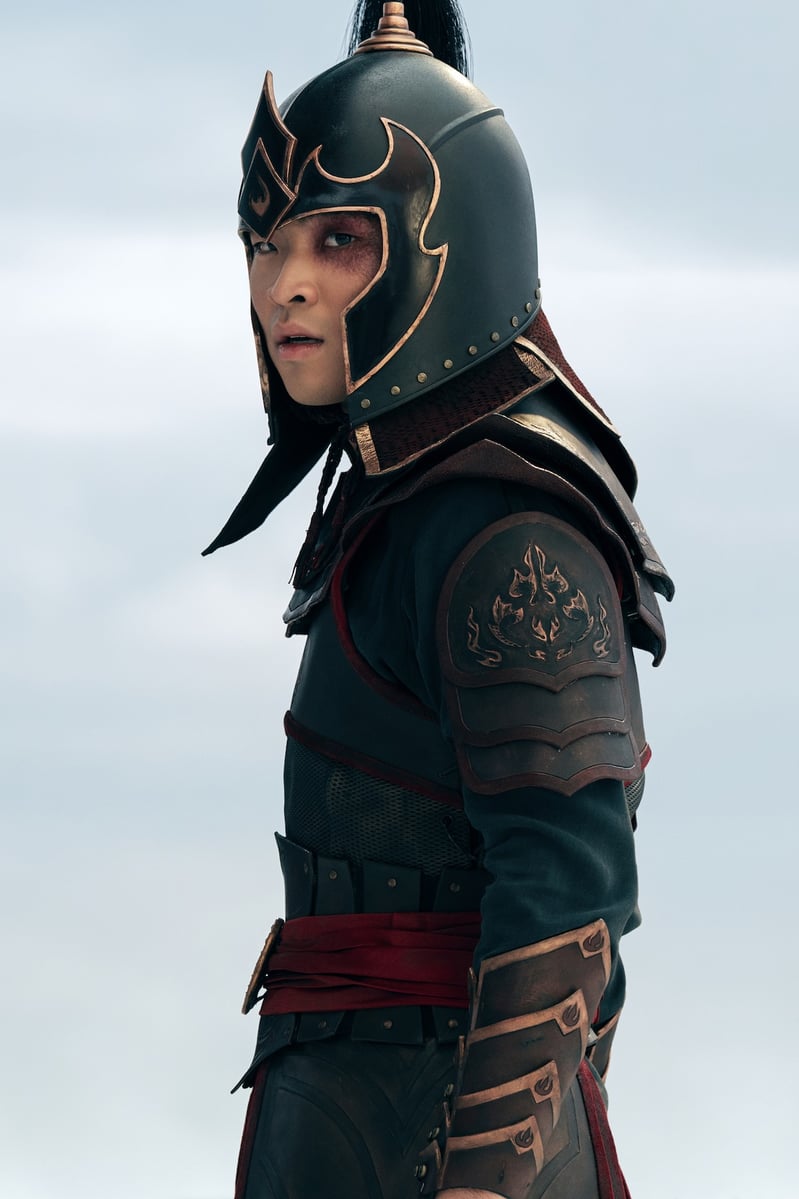Between its recent take on One Piece and the trailer of its forthcoming Avatar: The Last Airbender adaptation, Netflix appears to be fully committed to all things live-action.
It’s been something of a redemption arc considering the disastrous Death Note movie they released back in 2017 starring Nat Wolff, LaKeith Standfield, Margaret Qualley, and Willem Dafoe. But it still begs the question: why are live-action adaptations always considered the “end game”?
RELATED: Netflix’s ‘The Talented Mr Ripley’ Series Is Your Next Crime Binge
Stories like The Last Airbender, which was executed to perfection by creators Michael Dante DiMartino & Bryan Konietzko, offer a certain magic and whimsy that cannot (and isn’t meant to) be translated beyond the paradigm of animation. And certainly not without being jarring, downright ridiculous, and groan-worthy; as was the case for much of the live-action One Piece.
Yet the entertainment industry’s decision-makers seem intent on double-dipping for the sake of their bottom line while neglecting the fact that perhaps the animated version won’t automatically be improved with human faces. If anything, it’s like airbrushing the Mona Lisa. Or cutting down Apocalypse Now for TikTok. Or letting M. Night Shyamalan have free rein of an Avatar: The Last Airbender movie (never forget).
It also speaks to a greater originality problem that’s only been compounded by the current raft of reboots, prequels, sequels, spin-offs, and what have you of beloved, long-dormant IP. Can’t we just get something — literally anything — that hasn’t already been explored these days?

Ultimately, what it feels like is a lack of respect for the animated form; as if the cinema of hand-drawn emotions voiced in a recording booth is somehow inferior to the cinema captured by cameras and a real-life body. When filmmakers like Hayao Miyazaki exist, this sentiment — overt or subconscious — simply isn’t true.
Despite everything outlined above (and despite how anti-live-action we may sound), we’re choosing to remain cautiously optimistic about Netflix’s Avatar: The Last Airbender. Especially considering how the full-length trailer appears to have nailed both the philosophical tone and bending mechanics (not the mention the simple pronunciation of “Aang”).
RELATED: By Order Of Netflix — Two ‘Peaky Blinders’ Spin-Offs In Development

Developed by Albert Kim and scheduled to hit streaming queues in 2024, Netflix’s Avatar: The Last Airbender stars:
- Gordon Cormier as Avatar Aang
- Dallas Liu as Prince Zuko
- Kiawentiio Tarbell as Katara
- Ian Ousely as Sokka
- Paul Sun-Hyung Lee as General Iroh
- Ken Leung as Commander Zhao
- Elizabeth Yu as Princess Azula
- Daniel Dae Kim as Fire Lord Ozai
- and plenty more
Avatar: The Last Airbender officially hits Netflix on February 22nd, 2024. Check out the synopsis and first-look gallery below; plus the full-length trailer above.
The four nations once lived in harmony with the Avatar, master of all four elements, keeping peace between them. But everything changed when the Fire Nation attacked and wiped out the Air Nomads, the first step taken by the firebenders towards conquering the world. With the current incarnation of the Avatar yet to emerge, the world has lost hope.
Like a light in the darkness, hope springs forth when Aang, a young Air Nomad — and the last of his kind — reawakens to take his rightful place as the next Avatar. Alongside his newfound friends Sokka and Katara, siblings and members of the Southern Water Tribe, Aang embarks on a fantastical, action-packed quest to save the world and fight back against the fearsome onslaught of Fire Lord Ozai.
But with a driven Crown Prince Zuko determined to capture them, it won’t be an easy task. They’ll need the help of the many allies and colourful characters they meet along the way.







Related Articles:
- What’s New To Binge In Australia?
- What’s New On Stan In Australia?
- What’s New To Netflix In Australia?
- What’s New To Amazon Prime In Australia?
Also Read:















